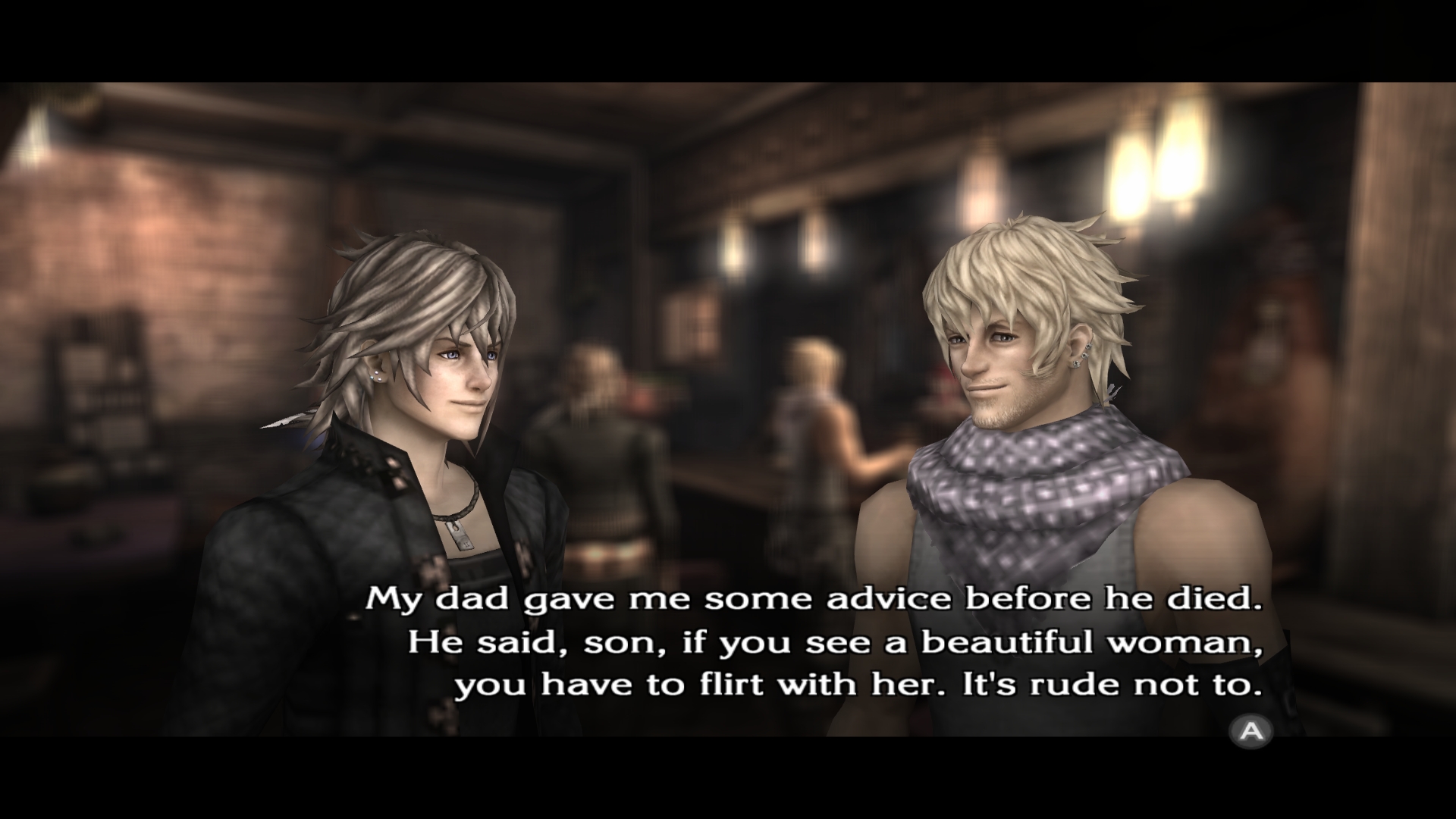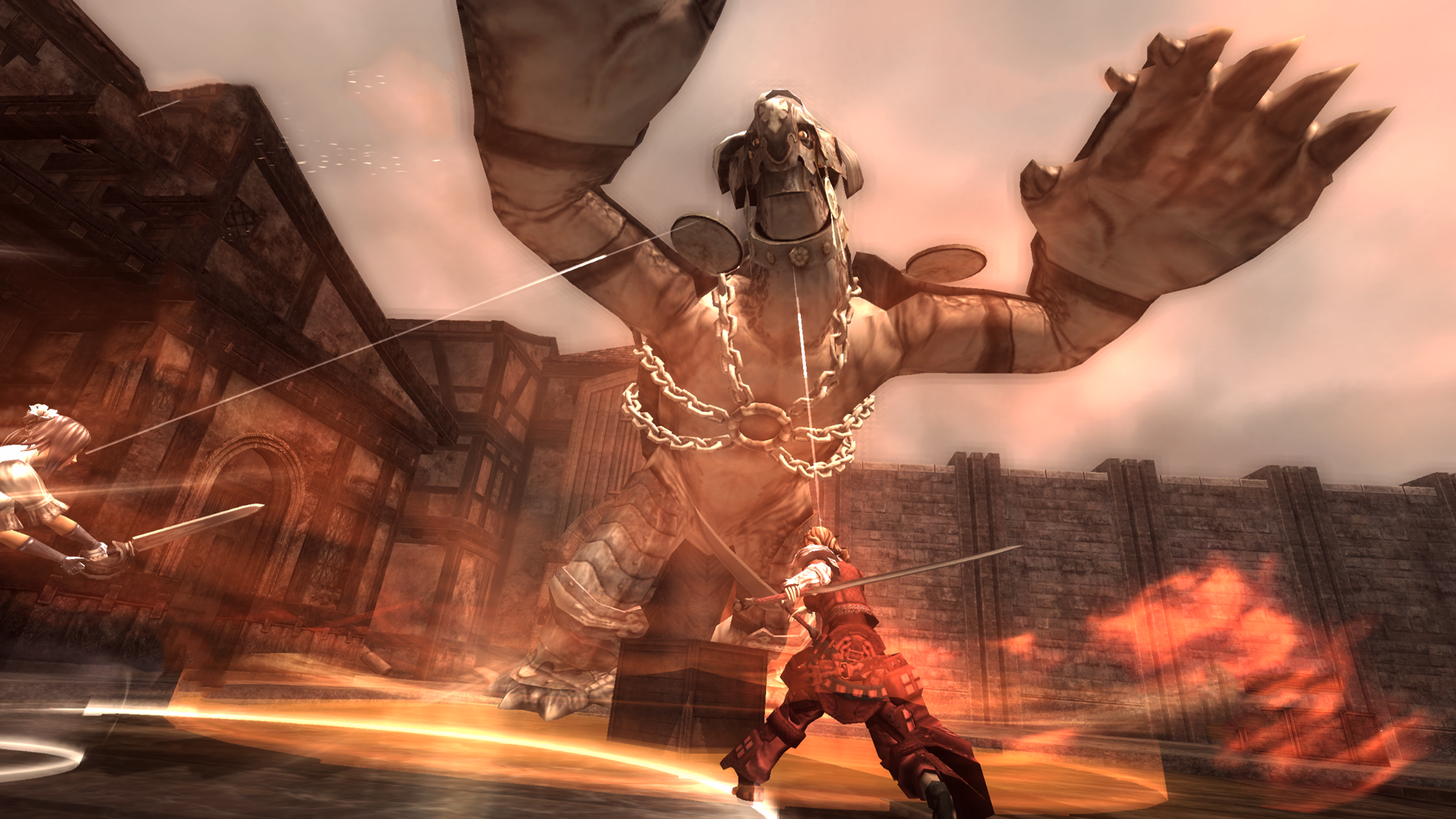
Don’t let your Wii gather dust just yet! If that’s too late, then you should dust off your Wii for this title. Developed by Mistwalker and AQ Interactive, The Last Story was released just a few weeks ago in the U.S. thanks to XSEED Games. It is one of the best Wii games ever produced and has the pedigree to prove it. This action JRPG was directed under Hironobu Sakaguchi, the mastermind behind the Final Fantasy series, and has a score composed by the musical genius, Nobuo Uematsu. Both are revered for producing material of utmost quality, and they don’t disappoint with what can be considered the last story for Wii.

One of the most endearing aspects of The Last Story is the plot itself. The band of mercenaries that the story focuses on are some of the most entertaining bunch of CPUs to listen to. Being almost a direct port from the European version, most of this credit would have to go to the great localization team behind it, Nintendo of Europe. There is a large cast of different dialects from across the British Isles–much more varied than of those found in Xenoblade Chronicles–and are incredibly well done. While each character is based off of an archetype, they quickly evolve beyond their apparently one-dimensional personalities into likable and well-rounded individuals. It is the dreams and desires of the mercenaries that really drive the story and compel the player to play more just to see how their lives unfold. In addition, the acting itself is realistic and not overdone. This is unique to the JRPG where Japanese storytelling typically has characters really play out their personalities. Villains are not exceptionally evil and good guys struggle in determining what defines right from wrong. It is a story about warring nations, corrupt governments, and protecting a deteriorating world. Sounds awfully familiar to real life, doesn’t it?

The Last Story’s setting mostly takes place on Lazulis Island, a place ruled by the powerful Count Arganan. On the outside, this medieval island is prosperous and lively, benefiting from the military might of the castle which supersedes it. However, this place is full of dark secrets which get revealed as the story progresses. While it is not the typical large-scale world that most JRPGs host, Lazulis Island and its surroundings have more than enough to make this game feel like a worthwhile investment.

There are two sets of controls the player can chose from to play this game. One being the Wiimote/Nunchuk combo, the other being the Classic Controller. I personally preferred using the Classic Controller. As such, most of my experiences with the game’s control mechanics will be based off of that specific control scheme. Also, following the recommendations of others, I changed the controls from normal to manual. This allows the player to attack using the A button instead of having attacks automatically occur near the presence of a enemy. Having it on manual adds much to the game’s enjoyment, and I would recommend that others do the same. This can be accessed in the Main Menu under Options and then Controls 2.
The Last Story’s combination of both Japanese RPG and Western RPG elements are not only found in the narrative, but in the gameplay as well. The Last Story includes stealth and strategy that is not typically found within a JRPG and it does not go overboard with it. This balance and simplicity is what makes the gameplay really shine and combines really well with the battles which happen in real-time. For the most part, the player is in control of Zael, an extremely friendly fellow who dreams of becoming a knight. He has a few tricks up his sleeve that make him stand out from his compatriots, most notably his Gathering ability.

With the press of the L button, powers granted to Zael from a mysterious force will direct all enemies to focus on him. This adds a strategic element to combat, allowing opportunities for Zael’s fellow mercenaries to cast magic or do tasks necessary for quest completion. Using the ZL button, Zael also has access to a crossbow and a variety of arrows. He can use it to scout out enemy weaknesses and to snipe out-of-reach opponents with the press of the A button. Holding down the A button will allow Zael to use his Gale ability, which is handy for diffusing magic circles that appear on the ground from magic attacks from both friendly and enemy fire. Dispersing friendly magic circles can have additional benefits, granting buffs or healing to the rest of the party.
When the other party members take the place of Zael for brief moments throughout the game, they can be controlled in a very similar matter. However, do know that they lack the Gathering ability and usually the crossbow as well. Despite this, all the characters have their own particular attributes which makes each member valuable.

For each battle, the player can use the environment towards their advantage. There may be some debris to hide behind and snipe opponents from afar. The layout of the terrain may also allow for a surprise attack, or even part of the landscape could be destroyed to gain the edge in battle.
Overall, the gameplay mechanics of The Last Story are so solid, the game also has its own online multiplayer functionality. This is something that is nearly nonexistent in JRPGs. There are two modes to be precise, a co-op mode and a deathmatch mode. In co-op, the player works together with other players to take down bosses found within the game. In deathmatch, players fight against each other in a match of skill. Unfortunately, these online functions seemed to be hampered by Nintendo’s lackluster online network. I found it difficult to find people to play with, but when I did, I found these features to be a lot of fun. Still, the single player adventure is where The Last Story really makes its impact.

An appealing story with engaging gameplay are all wrapped up in one nice, attractive bow with The Last Story’s fantastic soundtrack. Nobuo Uemastu still has it in him, creating musical backdrops that provide emotion to climatic scenes and turning them into memorable moments. For the longest time, I found myself humming to the tune of Toberu Mono. In fact, I think I still do.
In its final year, the Wii has been blessed with two magnificent action JRPGs. In April, it was Xenoblade Chronicles. Now it is The Last Story. If it were not for the efforts of Operation Rainfall I may have never of had the chance to experience these amazing games. Not just because the fan campaign may have had some influence in getting these two games ported to North American shores, but mostly because if it were not for their active promotion of these games, I may have never given them a chance. The Last Story shows that the JRPG genre is not dead. It is a game that embraces the best of both Japanese and Western game design, and hopefully the bridge to many more great games to come. Now, give your Wii one last hurrah, and treat yourself to The Last Story.